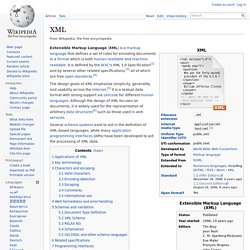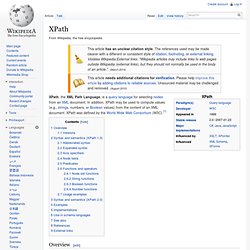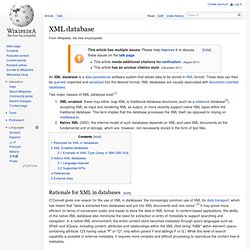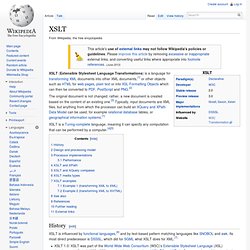

An Atlas of Cyberspaces. This is an atlas of maps and graphic representations of the geographies of the new electronic territories of the Internet, the World-Wide Web and other emerging Cyberspaces.

These maps of Cyberspaces - cybermaps - help us visualise and comprehend the new digital landscapes beyond our computer screen, in the wires of the global communications networks and vast online information resources. The cybermaps, like maps of the real-world, help us navigate the new information landscapes, as well being objects of aesthetic interest. They have been created by 'cyber-explorers' of many different disciplines, and from all corners of the world.
Some of the maps you will see in the Atlas of Cyberspaces will appear familiar, using the cartographic conventions of real-world maps, however, many of the maps are much more abstract representations of electronic spaces, using new metrics and grids. The atlas comprises separate pages, covering different types of cybermaps. (© Copyright - Martin Dodge, 2007. Data visualization - Google Search. XML. Extensible Markup Language (XML) is a markup language that defines a set of rules for encoding documents in a format which is both human-readable and machine-readable.

It is defined by the W3C's XML 1.0 Specification[2] and by several other related specifications,[3] all of which are free open standards.[4] The design goals of XML emphasize simplicity, generality and usability across the Internet.[5] It is a textual data format with strong support via Unicode for different human languages. Although the design of XML focuses on documents, it is widely used for the representation of arbitrary data structures[6] such as those used in web services. Several schema systems exist to aid in the definition of XML-based languages, while many application programming interfaces (APIs) have been developed to aid the processing of XML data. XQuery. XQuery is a query and functional programming language that is designed to query and transform collections of structured and unstructured data, usually in the form of XML, text and with vendor-specific extensions for other data formats (JSON, binary, etc.).
The language is developed by the XML Query working group of the W3C. The work is closely coordinated with the development of XSLT by the XSL Working Group; the two groups share responsibility for XPath, which is a subset of XQuery. XQuery 1.0 became a W3C Recommendation on January 23, 2007.[3] XQuery 3.0 became a W3C Recommendation on April 8, 2014.[4] "The mission of the XML Query project is to provide flexible query facilities to extract data from real and virtual documents on the World Wide Web, therefore finally providing the needed interaction between the Web world and the database world.
XPath. Overview[edit] The XPath language is based on a tree representation of the XML document, and provides the ability to navigate around the tree, selecting nodes by a variety of criteria.[2][3] In popular use (though not in the official specification), an XPath expression is often referred to simply as "an XPath".

Originally motivated by a desire to provide a common syntax and behavior model between XPointer and XSLT, subsets of the XPath query language are used in other W3C specifications such as XML Schema, XForms and the Internationalization Tag Set (ITS). XPath has been adopted by a number of XML processing libraries and tools, many of which also offer CSS Selectors, another W3C standard, as a simpler alternative to XPath. Versions[edit] There are currently three versions of XPath in use. XPath expression applied to an XML file. XML schema. An XML schema is a description of a type of XML document, typically expressed in terms of constraints on the structure and content of documents of that type, above and beyond the basic syntactical constraints imposed by XML itself.

These constraints are generally expressed using some combination of grammatical rules governing the order of elements, Boolean predicates that the content must satisfy, data types governing the content of elements and attributes, and more specialized rules such as uniqueness and referential integrity constraints. The mechanism for associating an XML document with a schema varies according to the schema language. The association may be achieved via markup within the XML document itself, or via some external means. XML database. An XML database is a data persistence software system that allows data to be stored in XML format.

These data can then be queried, exported and serialized into the desired format. XML databases are usually associated with document-oriented databases. Two major classes of XML database exist:[1] XML-enabled: these may either map XML to traditional database structures (such as a relational database[2]), accepting XML as input and rendering XML as output, or more recently support native XML types within the traditional database. XSLT. XSLT (Extensible Stylesheet Language Transformations) is a language for transforming XML documents into other XML documents,[1] or other objects such as HTML for web pages, plain text or into XSL Formatting Objects which can then be converted to PDF, PostScript and PNG.[2] The original document is not changed; rather, a new document is created based on the content of an existing one.[3] Typically, input documents are XML files, but anything from which the processor can build an XQuery and XPath Data Model can be used, for example relational database tables, or geographical information systems.[1] XSLT is a Turing-complete language, meaning it can specify any computation that can be performed by a computer.[4][5]

Data architecture. In information technology, data architecture is composed of models, policies, rules or standards that govern which data is collected, and how it is stored, arranged, integrated, and put to use in data systems and in organizations.[1] Data is usually one of several architecture domains that form the pillars of an enterprise architecture or solution architecture.[2] Overview[edit] A data architecture should[neutrality is disputed] set data standards for all its data systems as a vision or a model of the eventual interactions between those data systems.

Data integration, for example, should be dependent upon data architecture standards since data integration requires data interactions between two or more data systems. Business intelligence. Business intelligence (BI) is the set of techniques and tools for the transformation of raw data into meaningful and useful information for business analysis purposes.

BI technologies are capable of handling large amounts of unstructured data to help identify, develop and otherwise create new strategic business opportunities. The goal of BI is to allow for the easy interpretation of these large volumes of data. Identifying new opportunities and implementing an effective strategy based on insights can provide businesses with a competitive market advantage and long-term stability.[1]
Logiciel gratuit de sondage en ligne et d'enquête par questionnaire. Predictive analytics. Predictive analytics encompasses a variety of statistical techniques from modeling, machine learning, and data mining that analyze current and historical facts to make predictions about future, or otherwise unknown, events.[1][2] In business, predictive models exploit patterns found in historical and transactional data to identify risks and opportunities.

Models capture relationships among many factors to allow assessment of risk or potential associated with a particular set of conditions, guiding decision making for candidate transactions.[3] Predictive analytics is used in actuarial science,[4] marketing,[5] financial services,[6] insurance, telecommunications,[7] retail,[8] travel,[9] healthcare,[10] pharmaceuticals[11] and other fields.
One of the most well known applications is credit scoring,[1] which is used throughout financial services. Definition[edit]